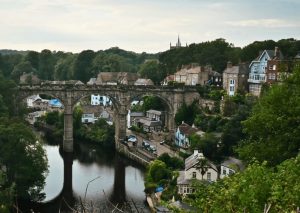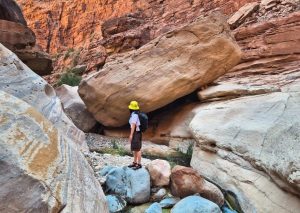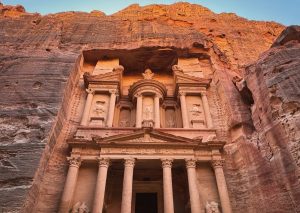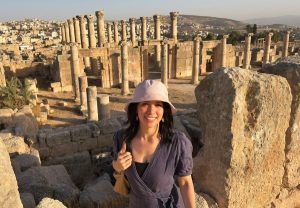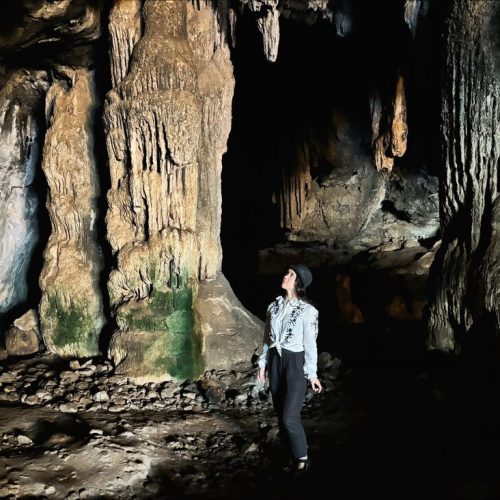
Tangier, Morocco’s vibrant port city at the crossroads of Europe and Africa, is a place where the city’s past is intertwined with legends and real historical events that make every street and building feel like part of a larger story.
Located at the northern tip of the country, just across the Strait of Gibraltar from Spain, Tangier has long been a gateway for travellers seeking adventure, mystery, and cultural immersion.
The city’s history stretches back over 2,500 years, with layers of influences from the Phoenicians, Romans, Arabs, and Europeans, all of which have left their mark on Tangier’s architecture, cuisine, and cultural traditions.
Why should you visit Tangier?
If you prefer visiting cities that are less hectic than Marrakech while still offering plenty to do, Tangier might be the place for you.
Once a haven for writers, artists, and spies, Tangier gained a reputation as an international city in the 20th century. Legends like William S. Burroughs, and Henri Matisse were drawn to its allure, capturing its charm and intrigue in their works. Overlooking the the Mediterranean sea and the Atlantic Ocean, it’s easy to see how Matisse felt inspired to paint Window at Tangier and many more works.
The city’s multicultural vibe springs to life as you wander through the lively medina with its labyrinthine alleys, vibrant souks, and the elegant Kasbah perched above. Outside of the old city, modern Tangier offers stunning coastal views, chic cafes, and contemporary art galleries, all while retaining evidence of it storied past.
In just two days, you can explore Tangier’s rich tapestry of sights, from the historical depths of its medina to the scenic beauty of its coastal landscapes. This guide will help you make the most of your time in Tangier, ensuring an unforgettable journey through one of North Africa’s most captivating destinations.
Where to stay in Tangier

After a recommendation from a friend, I stayed at La Tangerina and I could not have been happier as I entered the door and stepped inside. The building itself is a historic riad with an enclosed interior courtyard, beautifully restored to reflect a unique blend of Moroccan elegance and European flair. Perched at the highest point of the Kasbah and overlooking the Strait of Gibraltar, this boutique hotel is blessed with stunning views for guest to enjoy.
The interiors are thoughtfully decorated with antique furniture, Berber carpets, and handcrafted details within every nook and cranny. Everything is intentional. Each room is uniquely styled, with a combination of vintage decor, Moroccan textiles, and contemporary art that pays homage to the city’s artistic legacy.
One of the highlights of staying at this hotel is its rooftop terrace, where you can enjoy a delicious breakfast of Moroccan pastries, freshly squeezed juice, and mint tea while soaking in panoramic views of the medina rooftops and the Mediterranean Sea. In the evening, the terrace transforms into a romantic spot for cocktails at sunset, offering a perfect vantage point to watch the sun dip below the horizon.
Given its luxurious appeal, you imagine imagine staying here to be expensive, but comparative to European prices, it’s considerably more affordable, with rooms starting from £65 per night. However, compared to over riads in Tangier, it’s on the higher end of prices.
If this hotel doesn’t quite suit your taste, needs or budget, you can find a wide range of accommodation in Tangier on Booking.com.
Day 1: Explore the Heart of Tangier


Morning: Discover the Medina and Kasbah
Start your day by soaking up the atmosphere in the Medina (old town).
A labyrinth of narrow, winding streets filled with souks, cafes, and traditional Moroccan shops. Here is a good place to buy any souvenirs and enjoy the craftsmanship of Moroccan ceremonies and clothes.
At places like Fondouk Chejra (weaver’s market) you can watch traditional methods of weaving still practiced using a foot peddles and giant looms. The studios are incredibly simple – almost cave like – but don’t let the simple facades fool you. These weavers are masters of their crafts.


Wander through the Petit Socco, a lively square where you can feel the vibrant atmosphere of local life. Stop to admire the Sidi Bou Abib Mosque with its beautiful architecture, as well as the art deco facade of Cinema Rif. Opened in 2006, it is the first art house cinema and archive in North Africa. If you’re looking for a caffine fix, head through to the cafe there.
Visit the Kasbah, a fortress area perched high above the Medina, offering stunning views of the Strait of Gibraltar. Don’t miss stepping foot inside the Kasbah Museum, housed in the Dar el Makhzen palace.
Inside you will discover Moroccan art and learn about the history of Tangier as well exploring the beautiful gardens. Until visiting the museum I knew little about the Roman settlers who came to the area in 1st Century BCE and had a big influence building roads, buildings and trading routes.
If you want to know more about Roman history in Morocco, you can visit Volubilis, approximately 150km southeast of Tangier. I didn’t have time to fit this place into my itinerary, but I hope to visit this UNESCO World Heritage site some day. Getting there from Fez is even easier, located 90km west of the city.
Afternoon: American Legation Museum & the Beach Views


Know as once upon-a-time as being a favourite haunt among famous visitors to Tangier, I read that Cafe Hafa was a must-visit place. Intrigued, I went along to see what the fuss was about.
While the setting overlooking the sea is gorgeous, and the seating is reminiscent of a mini amphitheatre, I found it over-hyped. In former years it might have been more charming, but now it feels commercial and overrun with people. Still, I wanted to include this spot in case it sounded appealing to you.
Recommended: Alternatively, for somewhere less touristy, Restaurant Darna located in a quiet terrace just a stone’s throw from Petit Socco gets my vote. The food is homemade and the restaurant is owned by a women’s cooperative who also sell handmade crafts inside the premise. The income from the restaurant helps support social programs in the area.
Tangier’s location as a strategic point between the Mediterranean and Atlantic has made it a cultural melting pot throughout history, and nowhere is this more evident than at the American Legation Museum. Morocco was the first country to recognise American independence in 1777, and the building served as a diplomatic post and consulate for over a century, playing a crucial role during Tangier’s time as an International Zone in the 20th century. This museum might sound dry, but it’s far more interesting than you might imagine with stories about diplomates, spies and expatriates, plus the building itself is immaculate.
Spend your late afternoon relaxing on one of Tangier’s city beaches. Plage Malabata and Plage Municipale are both great options and walkable from the centre along the promenade. Try to plan your time so you can enjoy golden hour overlooking the peachy sands and views of the Mediterranean.
Evening: Dinner at Le Saveur du Poisson
You can bet you’ll find excellent seafood in Tangier with its close proximity to the ocean. The best in town is Le Saveur du Poisson, a cosy, family-run restaurant offering a set menu of fresh fish, traditional tagines, and delicious desserts for 250 dirham per person. The intimate atmosphere and flavourful dishes make it a favourite among locals and visitors. The place is small so expect a queue but it’s worth the wait.
Day 2: Day Trip to Nearby Attractions

Morning: Cape Spartel & Caves of Hercules
After breakfast head to Cape Spartel, about 14 km from Tangier, where the Mediterranean Sea meets the Atlantic Ocean. The iconic Cape Spartel Lighthouse, built in 1864, is one of the most striking landmarks at the cape. Perched on a cliff, the lighthouse marks the entrance to the Strait of Gibraltar and is still active, guiding ships as they navigate this important maritime route. The viewing platform near the lighthouse is a great place to soak in the beauty of the landscape and breathe in the sea air.
Just a short distance from Cape Spartel, you’ll find the Caves of Hercules, one of the area’s most famous attractions. According to Greek mythology, the caves are believed to be the place where the hero Hercules rested after completing his 12 labours – a series of tasks he had to undertake as penance for the murder of his wife and children.
The cave is particularly associated with the 11th labour, where Hercules was tasked with retrieving the golden apples of the Hesperides, which were said to grant immortality. These mythical apples were located in a sacred garden believed to be in the far western reaches of the known world, placing Hercules in the region of North Africa.

The caves are partially natural and partially carved by human hands, and one entrance opens directly onto the Atlantic Ocean. This entrance resembles the shape of Africa when viewed from inside.
Honest opinion: While I think the geology and the history behind the caves are cool, I wasn’t particularly fond of some of the gimmicky aspects of the cave that made it feel less authentic. I think a natural wonder like this doesn’t need neon lights or added props that ultimately removes some of the mystery.
Afternoon: Enjoy the nearby beaches & walking routes

Cape Spartel is close to several lovely beaches: Sol Beach, Achakar Beach, and Sidi Kacem Beach which are all within walking distance from each other. They all sort of merge together to create a wide stretch of sand broken up by some rocky patches. I wouldn’t say one is better than the other, so just pick whichever takes your fancy to soak up the rays and frolic in the sea.
The area around Cape Spartel is also part of a nature reserve, featuring pine forests and Mediterranean flora that make for a pleasant setting for walking or hiking. If you’re not bothered about the beaches, I recommend taking one of the trails through the forested areas or coastal routes. While I was meandering around I actually spotted a family of wild hogs – a mother with her babies and the sight was absolutely adorable!
Evening: Dinner at Restaurant Kebdani

The best meal I had in Tangier was at Restaurant Kebdani located in the historical old town. I loved everything about this place – the friendly staff, the beautiful interior filled with gorgeous mosaics, and of course, the food. Each dish was filled with flavour and fragrance. I would recommend this place to anyone, and don’t just take my word for it, they have plenty of glowing online reviews.
Final thoughts….
Two days in Tangier allows you to explore the city’s historic medina, stunning coastal views, and rich cultural blend. From the atmospheric alleys of the Kasbah to the scenic spot of Cape Spartel, Tangier offers a lovely mix of experiences that capture the essence of Moroccan charm and Mediterranean beauty.
If you want to make this itinerary even better, I would try to incorporate a trip to Morocco’s Blue City of Chefchaouen. From Tangier it takes approximately 2-hrs each way so it makes for an easy day trip. If you’re pressed for time, but really want to go, you could swap out the area around Cape Spartel for a day tip to Chefchaouen – the option is yours!


